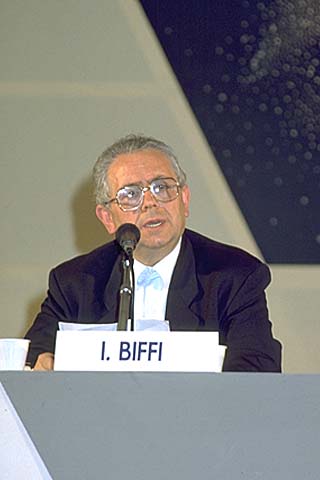Anselmo d’Aosta and Thomas Becket
‘Anselmo d’Aosta: The exhibition shows the places which were of fundamental significance in the life of Anselmo, starting with those of his childhood as youth (Aosta) and conti-nuing with the period of interior peace and monastic friendship (Le Bec). These are followed by the times of strife (England) and exile (Italy and France). In this way the actual historical development of Anselmo’s life is portrayed. However the exhibition also attempts to illustrate another and probably more secret aspect of Anselmo, that of pray-er. To this end the ‘realistic’ and ‘historical’ vision of actual places has been combined with elements of de-votion in the form of the figurative decorations which adorn an early manuscript of Anselmo’s Orationes et Meditationes, conserved at the Bodleian Library in Oxford. The absolute vigour of the fait of Anselmo springs from his dialogue with God, from the meditation of his myste-ries and from the study of his wonders revealed in the examples of holiness which are the hidden treasure and constant heritage of the Church. Thomas Becket: The exhibition is a chronological guide that presents the most important places in which the principal events of the fife of Thomas Becket took place. The presence of Canterbury remains as a constant backdrop, to this story, the symbol of the tragedy. The adventure of Becket commenced in London, where he was born. He sojourned in Paris and Bologna, the foremost contemporary cities of philosophical, theolo-gical and juridical culture. At this point, Canterbury is merely the seat of the court of Archbishop Theobald, where Becket, returning from abroad, was appointed Archdeacon. He became chancellor to Henry II, and was sent to Rheims and Toulouse to administer the king’s domains in France. Canterbury with its cathedral returns to the foreground when Becket was nominated Archbishop. This position was one of both great tragedy and exaltation, as Becket was summoned to Clarendon and subsequently banished to France. The period spent at the Cistercian monasteries of Pontigny and Sainte–Colombe, near Sens, was one of troubled and humiliat-ing exile, but at the monasteries of Vezelay and Clair-vaux the monks were excommunicated by the inflexible and passionate Archbishop. Becket’s brief visit to the Council of Tours is an epi-sode of minor importance. However; at the end of these travels Canterbury appears- yet again, as the homecoming after the long exile. Becket found his final resting place in the cathedral, in the shrine in which his body was placed after he had given up his life to defend the freedom of the Church. Canterbury Cathedral became the destination of devout pilgrims for centuries, the very image of the celestial Church, the most fitting abode for martyrs. Apart from showing the places associated with Becket, the exhibition also features a number of illustrations from the Queen Mary Psalter, a 14th-century manuscript conserved at the British Library in London.’











